This past weekend was quite gloomy with dense fog and constant rain and drizzle; however, that did not dampen our enthusiasm to visit Stone Tower Winery to catch up on the latest developments. We attended the groundbreaking ceremony at Stone Tower last year, so we were eager to discover the latest happenings there. We met with Bryan Toy, the General manager at Stone Tower Winery, this past Sunday; we were treated to a tour of the winery and vineyards and then a tasting of current releases.
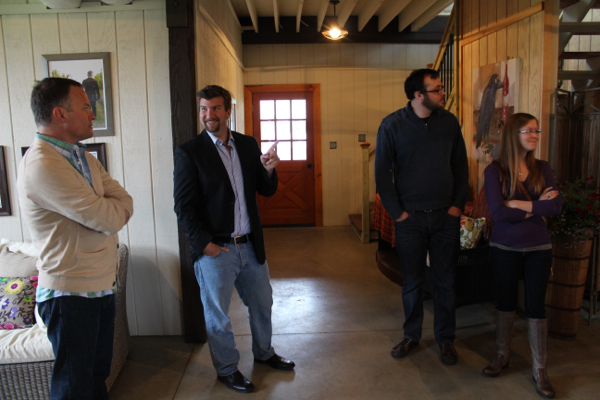
Bryan’s warm welcome made us feel right at home at Stone Tower Winery, and he conducted a tour of the vineyard as well as the winery’s new construction site via golf cart. (I had never been on a golf cart, so I was excited!) Owners Michael and Kristi Huber own over 200 acres of property on the Stone Tower Winery site, and over 20 acres are currently planted as vineyards. Chardonnay and Viognier make up at least six acres of the vineyard with plans to expand white varietals to include Sauvignon Blanc and Semillion. Red grape plantings include Cabernet Sauvignon, Cabernet Franc, Petit Verdot and Merlot. Vineyard practices favor tight spacing to manage nutrients and moisture, and these decisions are made in consultation with viticulture expert Lucie Morton. The vineyards enjoy a high elevation to maximize proper airflow and drainage. However, like all Virginia vineyards, there are indeed challenges in the vineyard at Stone Tower Winery. Unpredictable weather, rot, and disease can throw a curve ball to any vineyard, and Stone Tower Winery stays ahead of the game with a management program that blends both traditional and organic methods to ward off dangers to healthy vines.
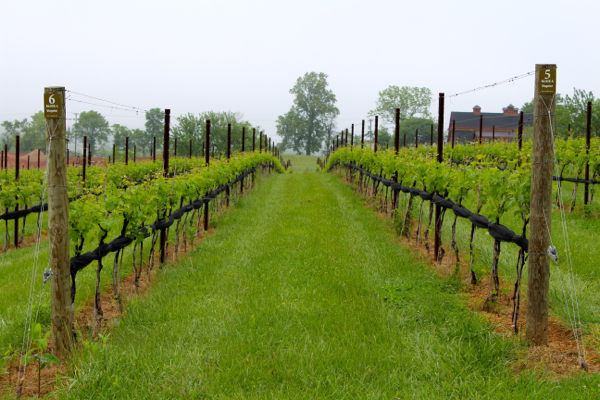
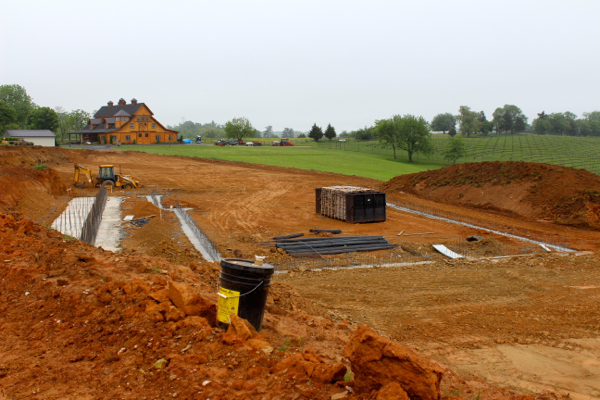
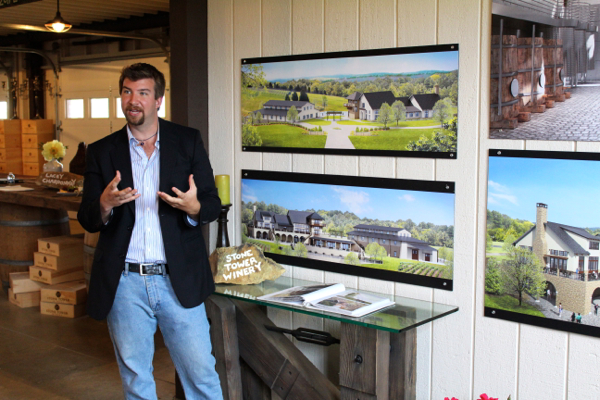
Our on tour was the construction site for the new tasting room and events facility. Space will be cleared in the future for this facility, and it has been designed so that an event such as a wedding and daily business such as wine tasting for costumers can proceed without interfering with each other. In addition to this facility, a new production building is also in the works with an emphasis on state of the art equipment and a sterile environment. The footings have already been poured and construction will begin soon. The goal here is to continue the winemaking excellence associated with Stone Tower Winery. In fact, Napa winemaker Tim Crowe will assume the helm as winemaker at Stone Tower Winery on June 1. Crowe’s appreciation for Virginia’s unique opportunities (and challenges) as well as his dedication to a team effort in the winemaking process suggest that great wines will be poured at Stone Tower Winery.
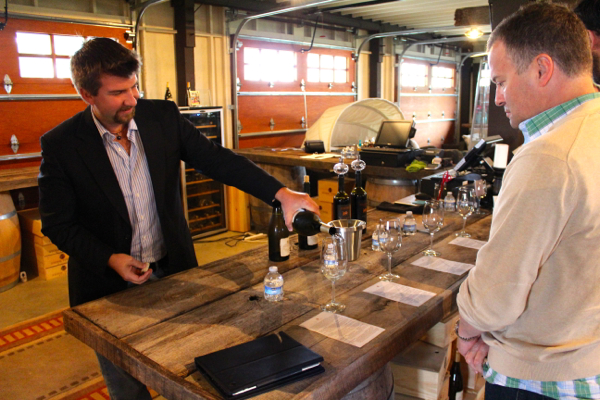
Of course, we are all about the wines. Grand tasting rooms and scenic views are one thing, but quality wines to support it all are more important. Bryan led us to the tasting room and guided us through a sample of the current releases at Stone Tower Winery. Three whites were offered for tasting, and these included the 2012 Lacey’s Chardonnay, the 2012 Viognier (a blend of neutral oak and concrete egg), and a 2012 Viognier produced from a concrete egg. (Yes, a concrete egg. It looks like an atomic bomb and is used most often in France.) We both agreed that the 2012 Lacey’s Chardonnay was the best white wine. Abundant pear notes with a fuller mouth feel made for a wine that was not only a sipper on its own but also a food friendly wine. I’d serve this one with poultry or white fish. Of the two Viogniers, we were split. Paul preferred the blended Viognier with its floral notes and spicy finish; however, I really enjoyed the more fruit forward Viognier done in the concrete egg. Characteristic floral aromas were noted but with a richer palate of stone fruits.
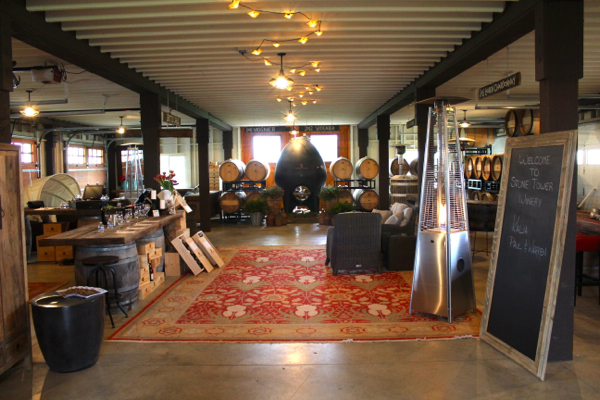
Two red wines were offered for tasting, and these included the 2011 Sanglier Noble and the 2009 Sanglier Noble. Both were blends under the Wild Boar label; label is used to designate wines that were produced from fruit not entirely grown on the Stone Tower estate. Paul and I reached a split decision on the reds. Paul preferred the fruitier, lighter-bodied 2011 Sanglier Noble, a blend of Cabernet Sauvignon, Merlot, Petit Verdot and Cabernet Franc. He noted bright berry aromas and flavors with a note of lavender. My own preference was for the 2009 Sanglier Noble; though a similar blend of grapes, this one was more complex with elements of cherry, sweet tobacco, and dried herbs. I also caught a whiff of violet.
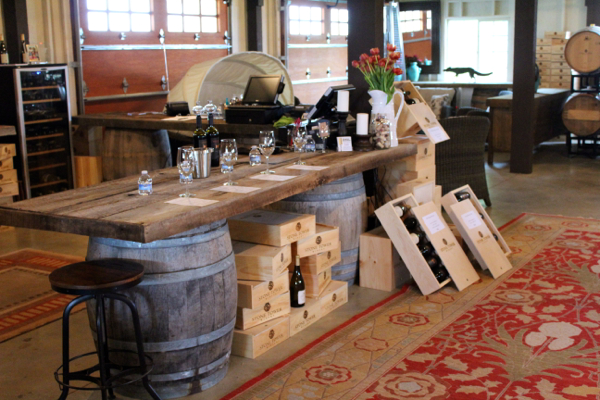
With our tastings done, we concluded that Stone Tower Winery is indeed making quality wines with a plan to continue a path to winemaking excellence; newer facilities will only enhance the ability to enjoy these wines. This sort of undertaking is only successful if qualified individuals work together to make it happen, and this is certainly the case at Stone Tower Winery. Before we left the winery, we made certain to purchase bottles of our favorite wines. We encourage readers to plan an appointment at Stone Tower Winery, and please mention that Virginia Wine Time sent you!
Category: Winemakers
Gray Ghost Blending Class
On May 4th we attended the third annual Blending Class at Gray Ghost Vineyards. The outcome of the class was to create a Meritage or Bordeaux style blend using at least three of the five Bordeaux grapes. To be considered a Meritage (or Bordeaux blend), a wine must consist of a combination of any or all of these varietals: Cabernet Sauvignon, Merlot, Cabernet Franc, Malbec, and Petit Verdot. No single varietal can make up more than 50% of the blend. We were trying to create a blend that was similar to the award winning Ranger Reserve. Our class began with winemaker Al Kellert teaching us about the different Bordeaux grapes. We learned about the flavor profiles for each grape and some history before getting started.
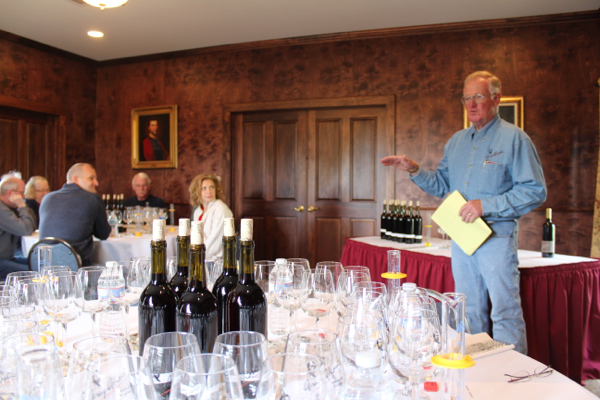
After our lesson on the individual grapes, we got to work on our blends. We began by tasting each of the five grapes separately. All the wines were from the 2011 vintage. As we tasted each of the grapes we kept notes about each one. We wrote down what we thought was prominent in each wine. We thought about things like the nose, the color, the flavors we were getting, the ending, and the tannins. After taking our notes and thinking about the individual wines, we then began the process of putting certain percentages together to create our blends. Since Al had not told us what the blend percentages were for the 2011 Ranger Reserve, we had no idea how much to include from each wine. It was up to our palates to decide what percentages of the wines we liked best. We used our pipettes to put different percentages in our beaker to create the final blend. We were able to blend two different times to get to the one we liked best. After testing and tasting a few times I came up with my final blend. My final blend was actually VERY close to the final blend of the 2011 Ranger Reserve.
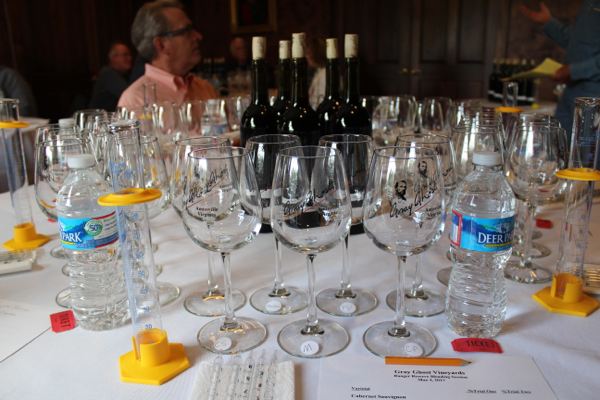
My blend consisted of 30% Cabernet Sauvignon, 20% Merlot, 20% Cabernet Franc, 15% Malbec, and 15% Petit Verdot. The 2011 Ranger Reserve blend is 34% Cabernet Sauvignon, 17% Merlot, 17% Cabernet Franc, 16% Malbec, and 16% Petit Verdot. Al was pretty impressed how close I got to the 2011 blend. I was pleased with the outcome.
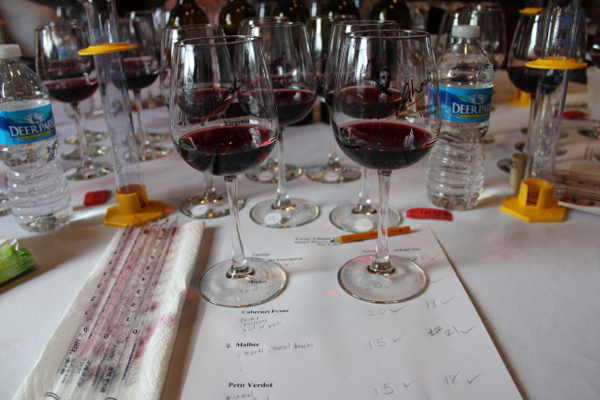
My favorite individual varietal was the 2011 Malbec. I think most participants enjoyed the malbec as well. The only problem with using malbec as the main ingredient is that Al doesn’t produce enough to create a malbec dominated blend. He informed us that if we used a high percentage of malbec, he’d only have one barrel of the blend to sell. Knowing this, many of the participants changed their blend in the second round to reflect this. I preferred my first blend as my finest. Warren joined me for the class but his allergies were keeping him from truly enjoying the nose and flavor profiles of each wine. He still came up with a pretty decent blend.
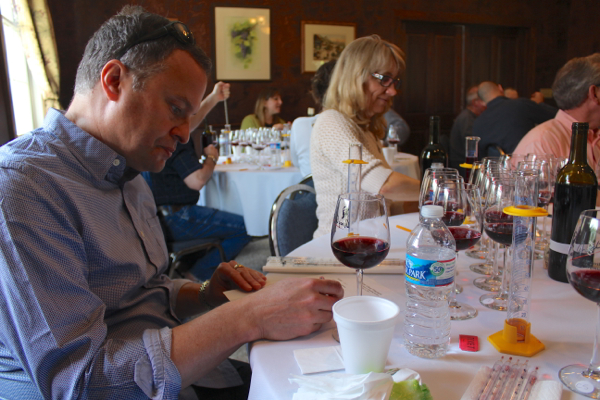
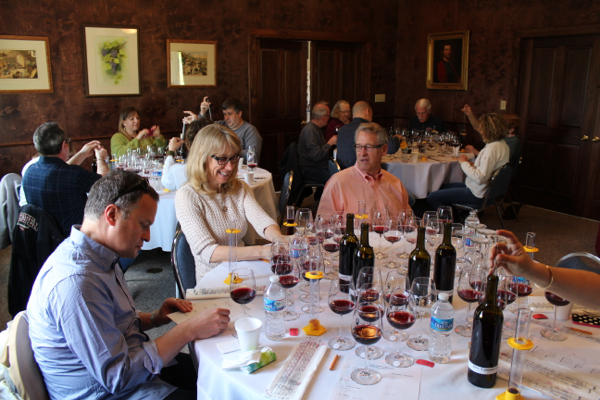
After our class we enjoyed a box lunch and a glass of wine on the patio. Al and Cheryl joined us during lunch. It was fun chatting about the class and about Virginia wine. We always have a great time at Gray Ghost. If you haven’t been to Gray Ghost lately, plan a trip soon. And tell them Virginia Wine Time sent you!
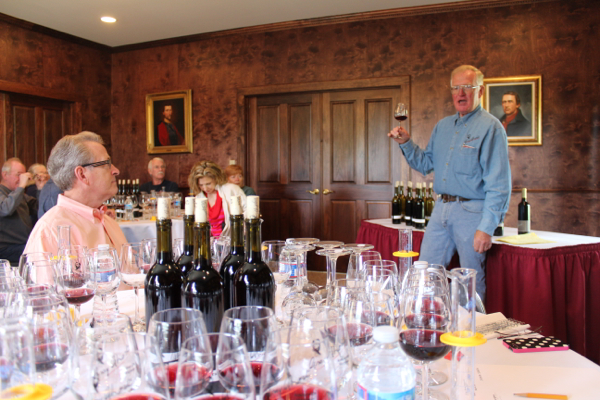
Delaplane Cellars
After the special release tasting we attended at Linden Vineyards recently, we decided to visit a few other wineries in the area. Our first stop was Delaplane Cellars. Being a club member and electing to pick up the shipments instead of having them shipped makes it possible to visit Delaplane often to see what’s new and taste the most current wines. Warren had a shipment to pick up so we decided to visit Delaplane.
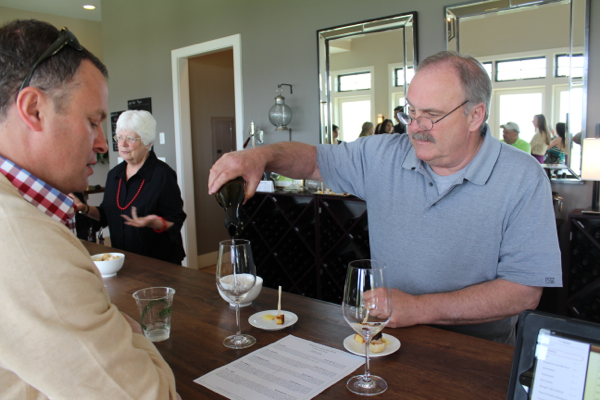
Jim Dolphin was there that day and conducted our tasting. The day we attended they were having a special pairing with some of the wines on the tasting menu. Our first wine was the 2012 Rose paired with a pork roulette with strawberry preserves. We noted strawberry, melon, and spice. This would make a nice sipping wine for a concert at Wolf Trap. The second wine/food pairing was the 2012 Viognier paired with toasted cornbread and local honey. Warren and I both thought this was a classic viognier with a floral nose, and honeysuckle and apricot in the mouth. The cornbread was a nice touch with the viognier. We really enjoyed this viognier. The final wine/food pairing was the 2011 Cinq3 paired with Caromont Red Rowe cheese. This one presented some bright fruit flavors with notes of smoke, coffee, and menthol. While I enjoyed the wine, I didn’t care for the cheese so I let Warren finish my piece with his wine. While not paired with foods, we also tasted the 2012 Melange Blanc and the 2011 Merlot.
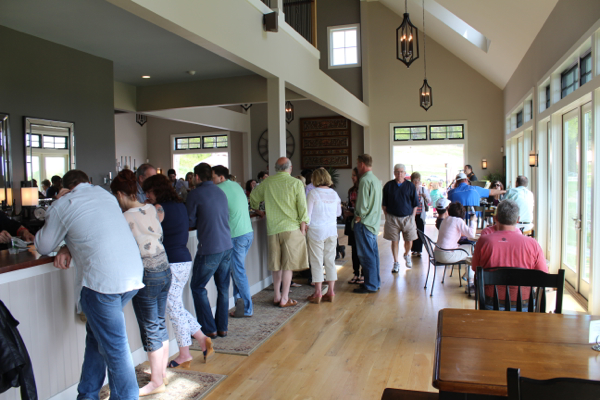
During our tasting we chatted with Jim about wine of course and he said of the 2010 and 2011 vintages, “It was the best of times and the worst of times.” That pretty much sums up the differences between the two seasons. Some of the 2010s still aren’t quite ready while the 2011s are wines to enjoy right now. During our conversation with Jim, he let us taste the 2012 Petit Manseng. The petit manseng has 5% RS but is integrated so well you are barely aware of the sweetness. We noted tropical fruit and a nice mouth weight. Jim also let us taste the 2010 Williams Gap. I remember loving this one at the barrel tasting a few years ago so I was curious to see how it was developing in the bottle. The first sip informed me it was coming along nicely. I enjoyed it now as much as I did then. We noted some nice fruit, anise, tobacco, and developing smooth ending. We’ll need to try to get a bottle of this for the wine rack sometime.
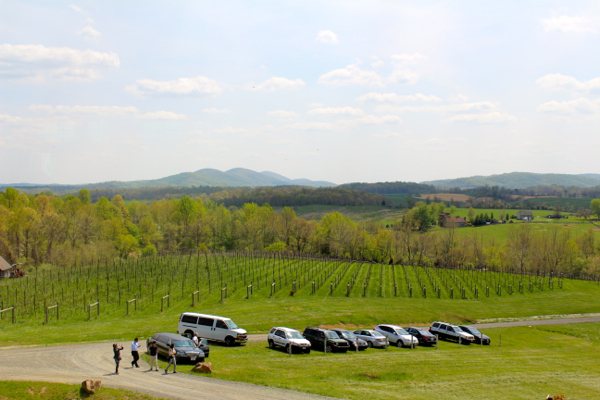
With our tasting and conversation complete, we decided to enjoy a glass of the 2012 Viognier with the wonderful views. We enjoyed the viognier so much that we included it as part of the #vawinechat Twitter tasting on May 2nd. Lots of Virginia wine bloggers and winemakers joined in for a Twitter tasting of Virginia viogniers. We enjoyed the 2012 Viognier as part of the tasting. We shared our impressions of the wine on Twitter for others to enjoy. Join us on Twitter sometime and participate in the #vawinechat events. The next one is on May 16th. We’ll be tasting and Twitting about Virginia red blends. And the next time you visit Delaplane Cellars be sure to tell them Virginia Wine Time sent you!
Special Tasting at Linden
Winemaker Jim Law held a special release tasting of upcoming wines at Linden. We look forward to attending this annual event, and this year was no exception. Gorgeous spring weather, bursting blossoms, and fluttering birds provided an idyllic setting to boot.
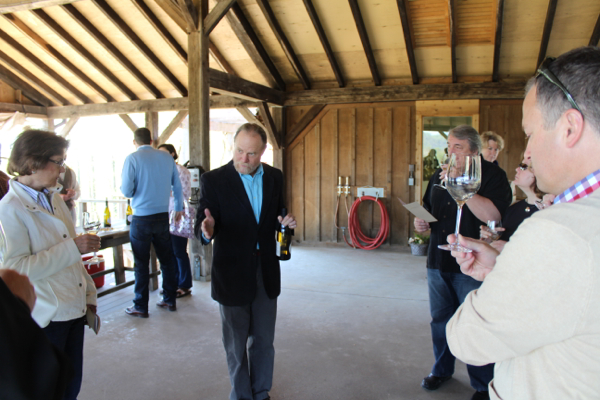
The event featured five tasting stations, and the first station was located on the outdoor crush pad and appropriately named First Sip. Chardonnay was the star attraction here, and there were four of them to sip. These included the 2011 and 2010 Avenius Chardonnay followed by the 2011 and 2010 Hardscrabble Chardonnay. The Avenius site is known for its rocky soils and thus produces leaner wines with mineral characteristics; we both agreed that the 2011 better presented these unique qualities of the Avenius vineyard. Shellfish will be perfect with one! The Hardscrabble site with its clay soils produce fuller-bodied wines; of the two, I preferred the 2010 Hardscrabble Chardonnay with its richer mouth feel.
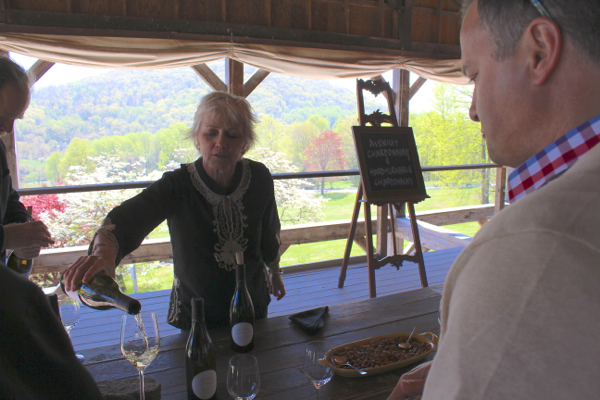
From the white wine station, we moved on to the red wines held in the barrel room. We moved through four tables that presented a total of seven red wines. The first table featured a 2010 Cabernet Franc, and this will be the first time that Law has released a single-varietal bottling of Cabernet Franc in quite some time; however, the 2010 Cabernet Franc proved to be jammier and more muscular than in previous years. Law therefore opted to bottle it on its own. We approved of the decision and enjoyed our sample with a spicy lamb meatball.
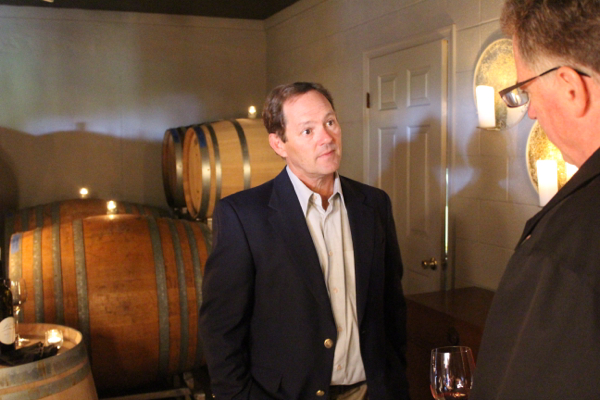
The other tables provided more opportunities to sample wines from the 2009 and the 2010 vintages. In all cases, we tended to prefer the 2009 pours. The most accessible was the 2009 Boisseau Red, a blend of 43% Merlot, 31% Cabernet Franc, and 26% Petit Verdot. The 2009 Hardscrabble Red proved to be the most complex and was dominated by Cabernet Sauvignon (64%) then Merlot (14%) and Petit Verdot (3%). Paul was a big fan of the 2009 Avenius Red with its plum notes and earthy elements.
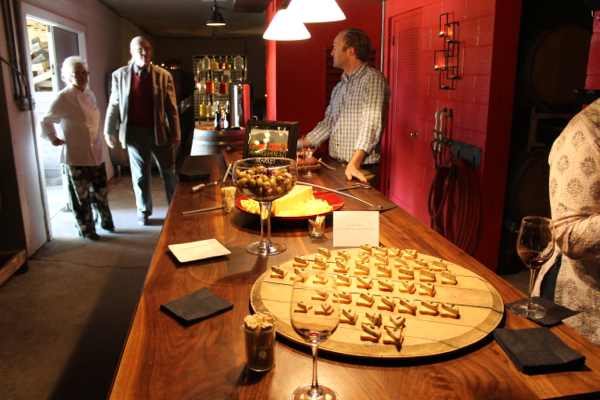
Though we did enjoy the 2009 vintages, it was hard to ignore the potential for the 2010 red wines. The 2010 harvest was best since the heralded 2007 season, and it was telling that Cabernet Sauvignon heavily dominated all of the 2010 blends. I am always a fan of the Hardscrabble reds, and once again the 2010 Hardscrabble Red was my favorite of the still evolving 2010 blends. Remember, though, that the 2009 blend contained 64% Cabernet Sauvignon. The 2010 version? 83% I have no doubt that the 2010 Hardscrabble Red will have great cellaring potential once it is released.
We completed our release tasting and then opted to try the current releases in the tasting room. Here again we were able to taste a contrast of seasons. Law has released a 2011 Red, a bright and light bodied red blend that would be suitable with a pizza, burger, or spicy fare. (I called this one a Beaujolais-style wine due to its soft, fruity nature, but I’m not sure if Jim would consider it a complement.) Anyway, it was the product of a very rainy and difficult year yet it was very quaffable. Be sure to enjoy soon, though. It might be an option for Thanksgiving dinner, too. (Paul ended up buying two bottles!). On the other hand, the 2010 Claret was more complex with smoky notes and ripe dark fruit flavors. Steak on the grill? This would pair nicely. Unlike its younger sibling, this one will be able to hang out on the wine rack for a while.
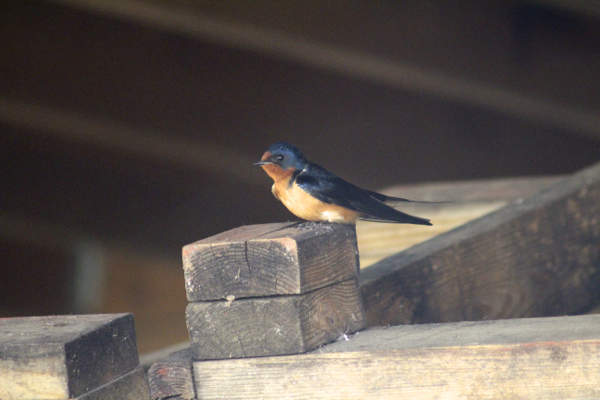
Our tastings were done, and we decided to linger for a while with a glass of our favorites. I savored a glass of the 2009 Hardscrabble Red, and Paul enjoyed a glass of the 2009 Avenius Red. We munched on a smoky gouda cheese, summer sausage, and a baguette, and Paul snapped pictures of barn swallows as they flew back and forth between a dark space beneath the deck and nearby trees.
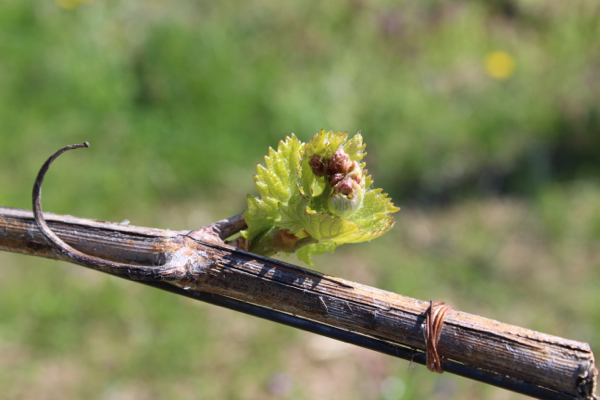
We enjoyed our special release tasting and made sure to purchase some very special wines. Plan a trip to Linden, and mention that Virginia Wine time sent you.
Hidden Gem
A few weeks ago, before the Drink Local Wine conference in Baltimore, we were cruising around Loudoun County visiting wineries when we decided to stop at Hiddencroft Vineyards. We hadn’t visited Hiddencroft for quite awhile and things had changed. First of all we noticed they are no longer conducting tastings in winery. They now conduct the tastings in the Dutchman’s Creek tasting house. The tasting house is a 1830s farm house that sits on the property that used to be adjacent to their original property. They acquired the property in 2011 and by Labor Day that year began conducting the tastings there. There are two tasting counters and with rooms on the second floor for larger groups. There is also a deck attached to the house where you can enjoy your wine and nibbles with beautiful views of the vineyard and surrounding property. The day we visited was sunny and warm and the views were wonderful. The deck was hopping with music and lots of visitors enjoying Hiddencroft wine.
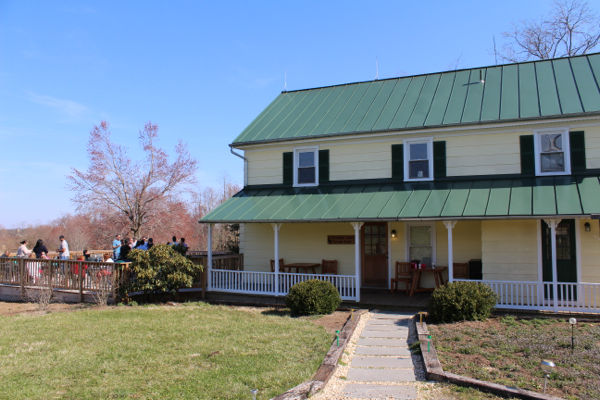
Owner and winemaker Clyde Housel conducted our tasting. We always enjoy tasting with Clyde. He doesn’t mind our numerous questions about the wines, the vineyard, and what’s new. We were able to taste the full lineup of wines and of course a few stood out as our favorites. We began the tasting with the 2011 Chambourcin Rose. We noticed the pretty pink color and notes of melon and spice. This would be a nice summer sipper for picnics and concerts on the lawn at Wolf Trap. Of the white wines our favorite was the 2011 Traminette Dry. It has a floral nose with hints of apple and tropical notes. We enjoyed the apple and white pepper notes on the tongue. There is also a semi-sweet version that would pair well with spicy dishes.
After the whites, we moved on to the lineup of red wines. While we thoroughly enjoyed the non-vintage Cabernet Franc and the Dutchman’s Creek Blend, the standout red was the 2008 Tannat. This red was aged for 42 months on oak. We noted tobacco on the nose with smoke, berries, and a smooth long finish in the mouth. This maybe the best Tannat we’ve tried in the whole state of Virginia. This wine is usually only available to purchase by the bottle but Clyde let us enjoy a glass. We enjoyed the glass on the deck with the other Hiddencroft visitors enjoying the beautiful day. We enjoyed the glass so much, we decided to bring a bottle home with us.
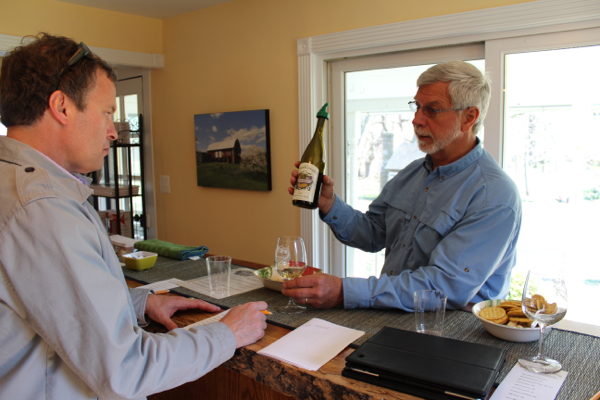
We simply can’t let so much time pass before our next trip to Hiddencroft Vineyards. It’s a little gem of a winery tucked away in northern Loudoun County that shouldn’t be missed. If you haven’t been to Hiddencroft Vineyards in a while, you need to plan to return. And when you do, tell them Virginia Wine Time sent you!
Drink Local Wine Comes to Maryland
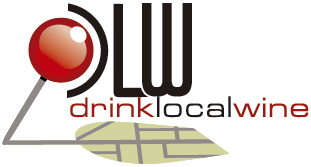 Drink Local Wine, established in 2008 by Jeff Siegel of The Wine Curmudgeon and Washington Post wine columnist Dave McIntyre, held its fifth annual drink local conference in Maryland on April 13. In previous years the conference was held in Texas, Virginia, Missouri and Colorado. We attended the event and concluded that it was a wonderful way to showcase the great strides made by Maryland’s winemakers. The next two posts will capture the highlights of the conference that culminated in a twitter tasting held at Camden Yards.
Drink Local Wine, established in 2008 by Jeff Siegel of The Wine Curmudgeon and Washington Post wine columnist Dave McIntyre, held its fifth annual drink local conference in Maryland on April 13. In previous years the conference was held in Texas, Virginia, Missouri and Colorado. We attended the event and concluded that it was a wonderful way to showcase the great strides made by Maryland’s winemakers. The next two posts will capture the highlights of the conference that culminated in a twitter tasting held at Camden Yards.
Our participation in the conference actually began with a media tour of Maryland wineries on Friday, April 12. We boarded a bus with other bloggers, columnists, and writers from the Tremont Suites Hotel in Baltimore. Our first destination was Sugarloaf Mountain Vineyard located in Dickerson, Maryland. Winemaker Benoit Pineau was on hand to conduct a tasting of Sugarloaf’s wines; however, Elk Run Vineyards’ representatives were also on hand to likewise showcase their best wines. A buffet of cheeses, olives, breads and deli meats were offered for enjoyment. Favorites included the 2011 Comus, a lush Bordeaux blend created in a difficult year. Yes, Maryland got the same copious amounts of rain in 2011 that plagued Virginia that summer. My ultimate favorite, though, was the 2010 EVOE!, so named after the excited cries of ancient Bacchanalians to honor the god, Bacchus. In a contrast of seasons, the 2010 EVOE! was more dark-hued and complex. Like Comus, it is a Bordeaux-style blend. From Elk Run, I enjoyed the Alsatian-styled 2011 Gewurztraminer. Tours were offered, and an added treat was the ability to vote for an upcoming release. Benoit Pineau asked us all to sample four red wine samples and then to vote on a favorite, and these included a Cabernet Franc, a Merlot, a Cabernet Franc (75%) and Merlot (25%) blend and then a Merlot (75%) and Cabernet Franc (25%) blend. These were all from the 2012 vintage. My vote? The Cabernet Franc/Merlot blend. Benoit will be the ultimate judge on which will be finally bottled, but I will definitely follow up to see if I picked the winner!
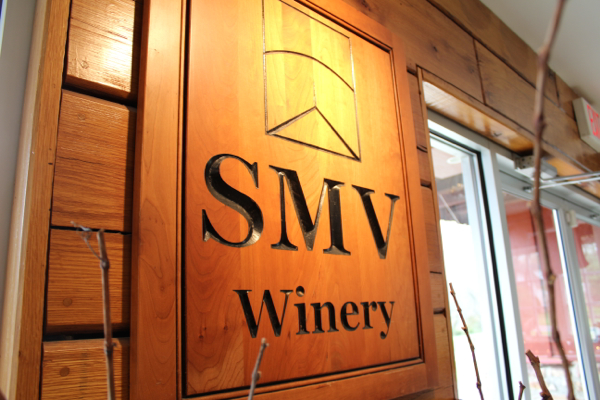
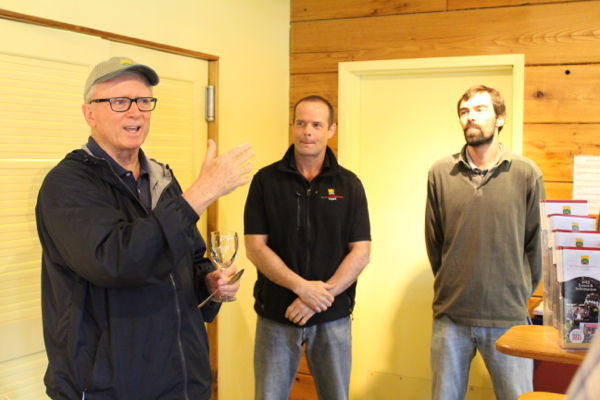
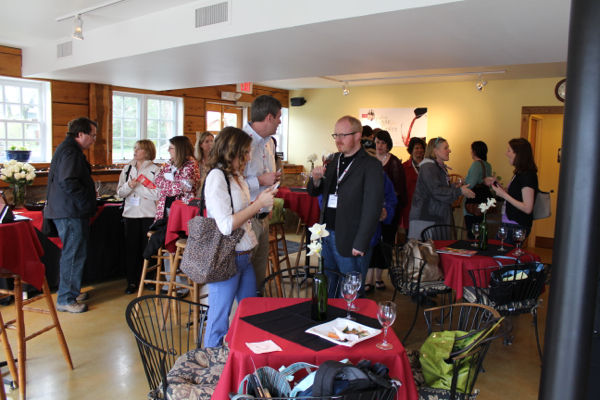
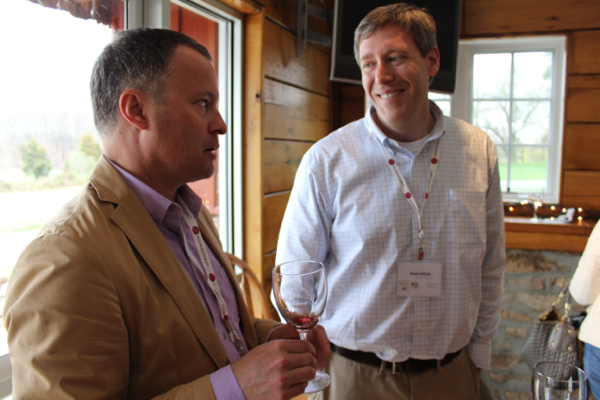
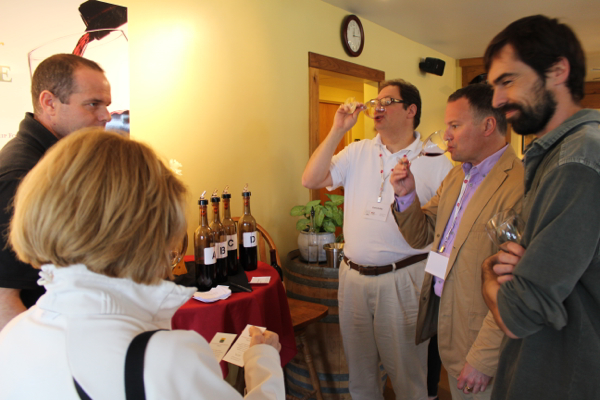
By lunchtime, it was time for the press junket to leave Sugarloaf Mountain Vineyards; our next destination was Black Ankle Vineyards in Mt. Airy. Did I mention lunch? It was here that we were treated to a lunch prepared by Woodberry Kitchen of Baltimore, a restaurant devoted to eating and drinking local. We were greeted by a glass of an outstanding 2012 Gruner Veltliner (yes, Gruner in Maryland) that complemented seasonal tartines. Lunch began with a warm greeting from owners Ed Boyce and Sarah O’Herron. They gave a brief synopsis of their story and the decision to make wine in Maryland. The couple opted to purchase farm property with the rockiest, least fertile soil possible; not good for corn or tomatoes, but great for a vineyard. Anyway, we tasted the excellent results of their decision. With grilled Chesapeake oysters we sipped the floral 2011 Bedlam, a blend of Chardonnay, Albarino, Muscat, Viognier and Gruner Veltliner. Wheat berry salad with radishes, pea shoots and pecans was paired with a berry-driven 2010 Rolling Hills, a red blend that included all of the Bordeaux grapes. The main event, though, was a platter of whole Maryland Suffolk grilled lamb, lamb sausage, scallions, and potatoes. The lamb was indeed fresh and local; Woodberry Kitchen’s George the Butcher butchered the lamb, and it was absolutely divine. Equally divine was the 2010 Leaf Stone Syrah with its elements of tobacco, dark plum, and blackberries. (This was my favorite pour of the day.) A dessert course rounded out our dining experience, and we were served Beiler’s Heritage Acres cornflour cake made from locally produced flour. This was partnered with a port-style Terra Dulce II.
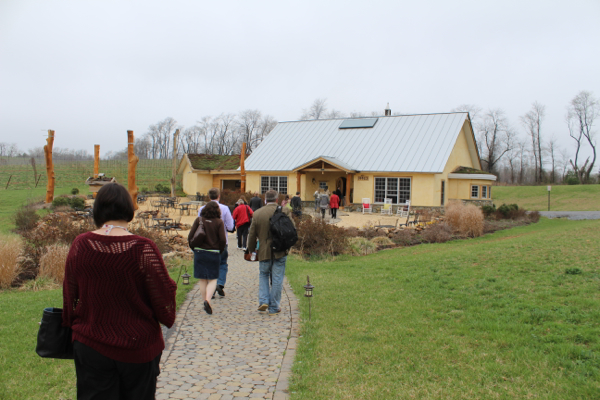
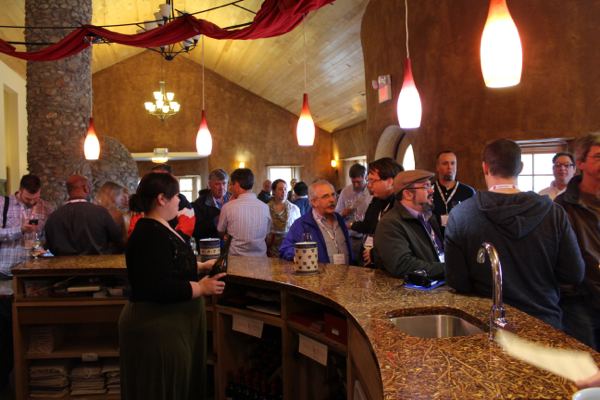
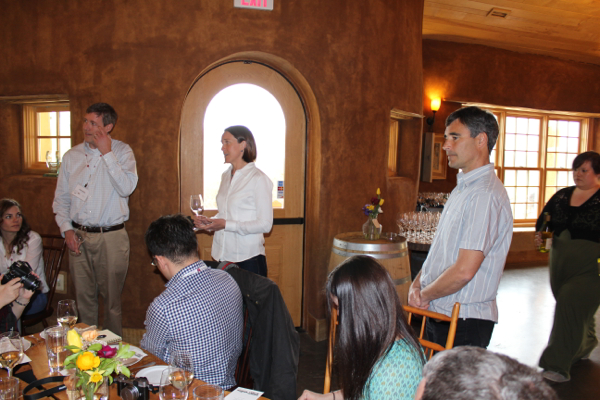
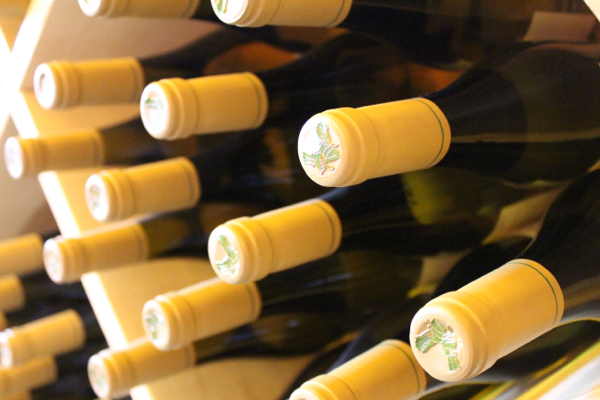
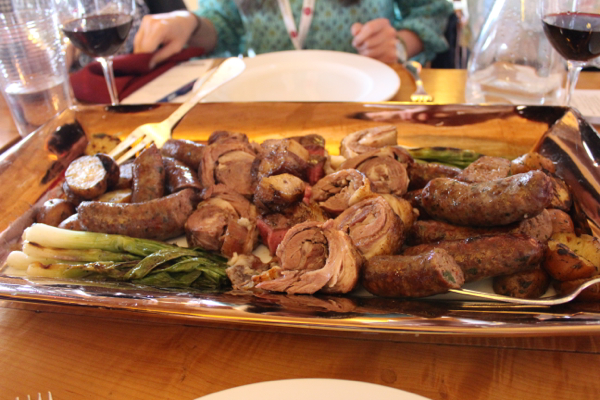
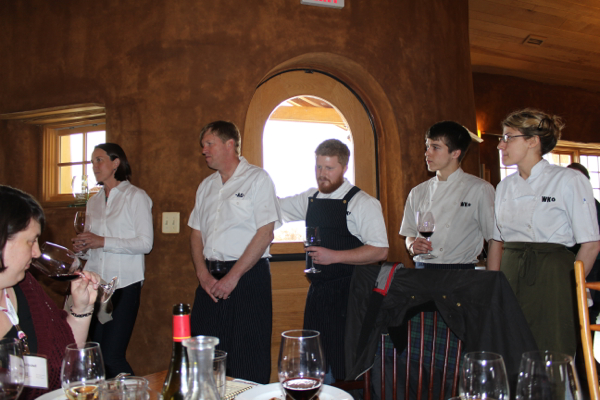
With our appetites satisfied, we departed for the last leg of our tour that concluded with a visit and tasting to Boordy Vineyards located in Hydes, Maryland. Vineyards here are nestled in the Piedmont Plateau and the Blue Ridge Province. Robert Deford greeted us and provided a brief history of the winery. Boordy Vineyards is the oldest commercial winery in Maryland, and Philip and Jocelyn Wagner established the winery in 1930 to protest Prohibition. Deford bought the property in 1980; however, he replanted the vineyard in 2005 to maximize its potential to produce world-class wines. We tasted the results in the tasting room. The buzz-worthy wines were the rich 2010 Cabernet Franc Reserve and the 2010 Landmark Reserve, an award winning blended red wine. Also on hand to pour their wines was Cygnus Wine Cellars and Fiore Winery. Fiore Winery offered two grappas, and these were an interesting twist to the traditional line up of white, red and dessert wines.
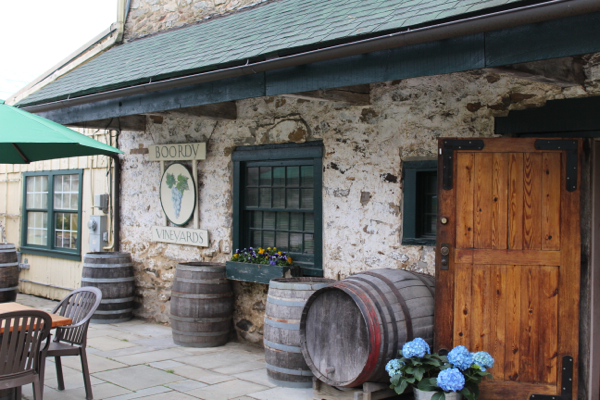
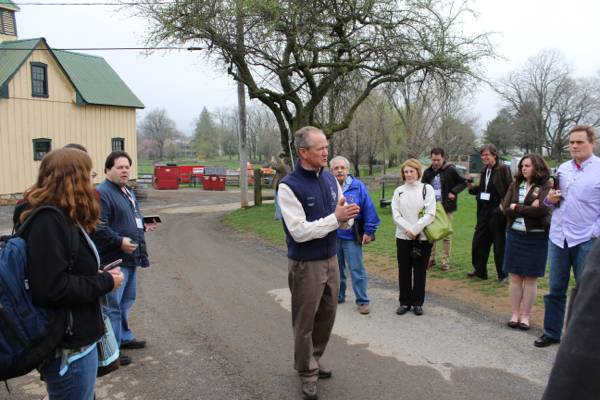
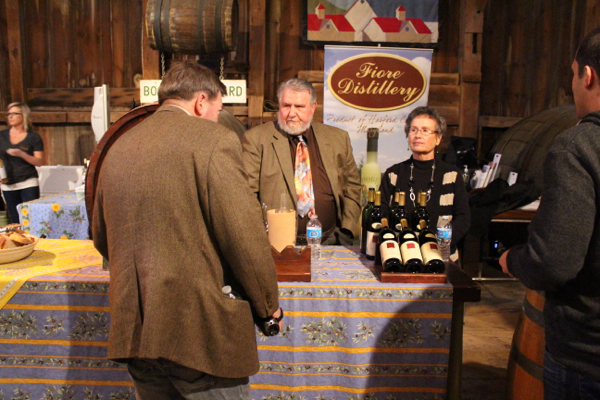
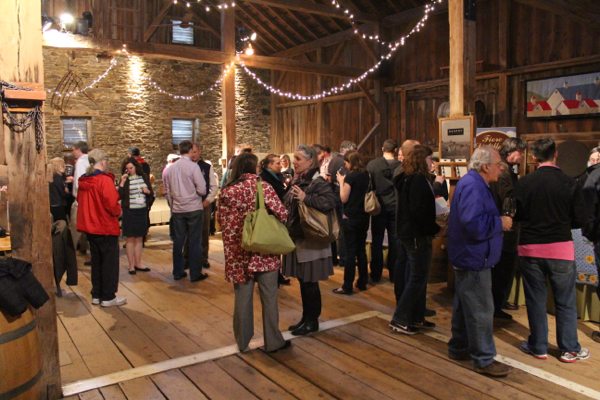
The day ended with a dinner at the Waterfront Kitchen in Fells Point, an event hosted by the Maryland Department of Agriculture and the Maryland Wineries Association. Yes, more food and wine. However, I will provide details about this experience in the next post. Before I sign out, though, I must thank Nomacorc for sponsoring the very comfy bus that took us hither and yon. I’ll write more about Nomacorc in a future post.
Start your own tours of Maryland wineries soon. The wineries mentioned in this post are great places to begin. Just mention that Virginia Wine Time sent you!
Another Take on the 2012 Harvest
 Jake Busching earned a reputation as an excellent winemaker while at the helm of Pollak Vineyards. He is now the winemaker at a new venture called Grace Estate Winery that will open in April of this year. Grace Estate Winery is also the home of the heralded Mt. Juliet Vineyard that is located in Crozet. The winery is located in the Monticello AVA. We asked Busching to offer an early assessment of the 2012 vintage.
Jake Busching earned a reputation as an excellent winemaker while at the helm of Pollak Vineyards. He is now the winemaker at a new venture called Grace Estate Winery that will open in April of this year. Grace Estate Winery is also the home of the heralded Mt. Juliet Vineyard that is located in Crozet. The winery is located in the Monticello AVA. We asked Busching to offer an early assessment of the 2012 vintage.
1. How would you describe the 2012 growing season overall?
2012 was a peculiar year; it was an early, yet cool spring, and a blazing hot dry summer, followed by intermittent rains during harvest. I didn’t like it. There were too many odd variables within a given vintage including: 1) too close to frosting early; 2) too close to drought late; 3) July Derecho winds, and 4) too close to hurricane rains on ripe fruit. The plants seemed confused. Timing for bloom was off in the reds. Shoot growth was slow. And overall the cropload was down about 30% based purely on berry size.
2. In particular, how was the season for white grapes?
For the whites all of this strange weather had less effect than I would have thought. The aromatics are rich and the mouthfeel is lush. Acid was lower than I like but that is true in nearly every vintage.
3. And what about the red grapes?
The reds had more of a reaction to the vintage. Tannins are in short supply in almost all of the reds. Color isn’t bad but not as deep as I like due to sun intensity. The wines are good and better than many vintages I’ve worked; time will cure most of my rather exacting concerns. I think on a consumer level the wines will be received as being quite good.
4. What will be the hallmarks of the 2012 wines?
For the wines from Mount Juliet vineyards, Viognier and Chardonnay are both showing very well. The Merlot and Tannat are my top reds this year.
Futures at Gray Ghost
We recently attended the futures tasting at Gray Ghost Vineyards. This used to be called a barrel tasting but because of some changes at the state level, most wineries have changed the name of their barrel tastings. We have always enjoyed the barrel tastings at Gray Ghost so a name change didn’t bother us at all. We were still able to taste the wines that will be released in the future.
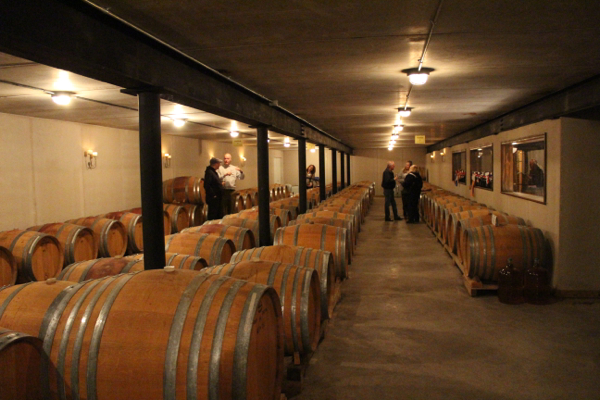
At this tasting we were able to taste the 2012 Chardonnay right out of the barrel. Of course it’s not quite ready yet but we noted pineapple and granny smith apple. This will be a nice vintage when it’s released.
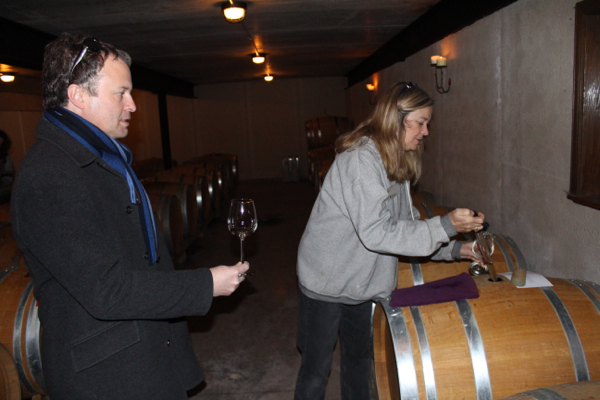
The first of the reds we tasted was the 2012 Petit Verdot. Yes, Al is finally doing a stand alone petit verdot. The 2012 presented berry notes, spice, and tart cranberry. This one will spend more time in the barrel before it is bottled. Look for it in another year or so.
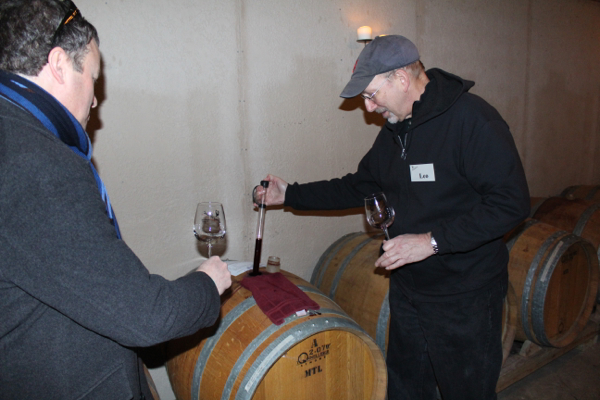
The next red we tasted was the 2011 Petit Verdot. This one will be released probably sometime in the fall. Of course I thought it was ready now and wanted Al to just put a barrel of it on the back of my car. We noted plum, spice, blackberry, and tobacco on the finish.
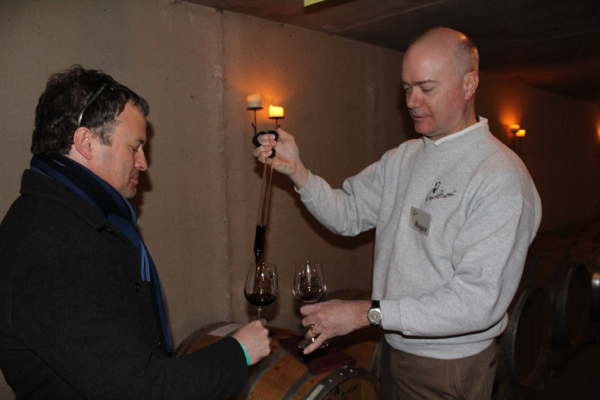
We then tasted the 2011 and the 2012 Cabernet Sauvignons. The 2011 was a lighter wine with cherry notes and a smooth ending while the 2012 presented big cherry notes with a few earthy elements. The 2012 will spend more time in the barrel before it is released. Both will be nice wines in the future. Al informed us there would not be a Reserve Cabernet Sauvignon for 2011.
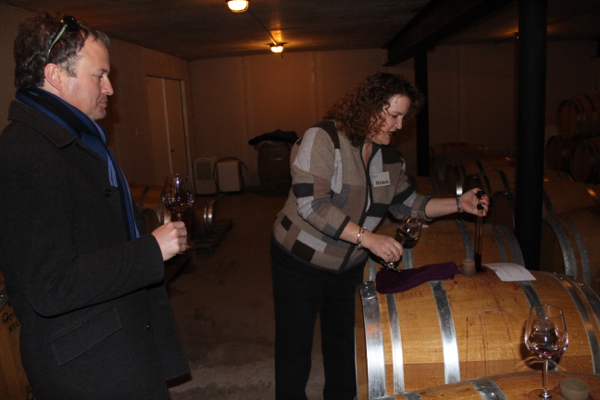
After tasting the individual wines we were given the chance to blend the 2012 Cabernet Sauvignon with the 2012 Petit Verdot. The PV only made up 15% of the blend but came through pretty strong in the mix. We also got to blend the 2011s and the combined wine was earthy, smooth, with some red fruit notes.
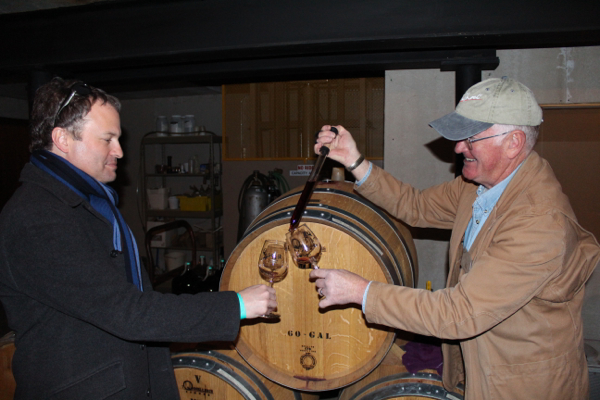
Once our blending and tasting was complete we placed our orders for our favorite wines to pick up in the “future” once they are bottled and released. I ordered a case of the 2011 Petit Verdot and Warren ordered a case of the 2012 Chardonnay. We know we’ll be enjoying them well into the future. If you missed the futures event at Gray Ghost, plan to attend one of the many events they have on their calendar. And when you do, tell them Virginia Wine Time sent you!
DuCard On The Way Home
We finished our Presidents’ Day Weekend trip to the Monticello area with a visit to DuCard Vineyards. We first visited DuCard when the winery was newly opened in 2010. Owner and winemaker Scott Elliff was on hand to conduct our tasting on a frigid day.
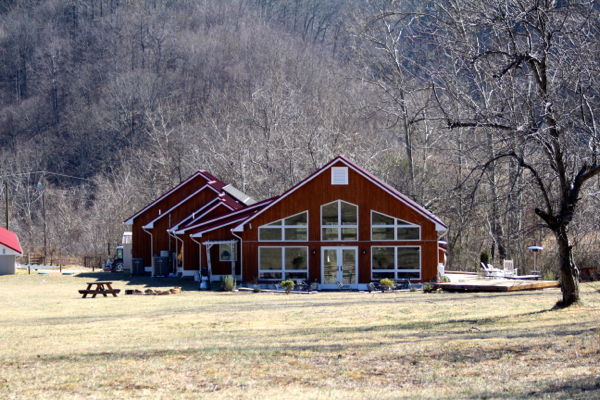
DuCard Vineyards has made quite a splash with its Signature Viognier with its 2010 version earning accolades at a recent blind tasting held in Richmond. One of the judges was wine expert Steve Spurrier; when the judging was done, the 2010 Signature Viognier scored a tie with a heralded 2010 Condrieu from E. Guigal Vineyards in the Rhone Valley of France. Unfortunately, we have not tasted the 2010 Signature Viognier; however, the 2011 Viognier went toe to toe with the 2012 Viognier that was offered for a side-by-side comparison. My nod went to the very aromatic 2011 Viognier with its peach flavors and bright acidity. The still-evolving 2012 Viognier is destined to find fans; right now, it presents a very fruity nose and palate with a distinct banana note.
Of the red wines, my favorite was the 2010 Petit Verdot. This Petit Verdot was the product of a hot, dry growing season and presents a very dense color in the glass. I detected a whiff of violet with dark fruit elements that include black currants, dark plums and blackberry. A firm tannic presence suggests aging potential; however, if leg of lamb or thick, juicy steaks beckon for this Petit Verdot, open early or decant. I made certain to purchase a bottle for a future dinner party; of course, future could mean next week or five years from now! In any case, Norton lovers should enjoy the jammy 2010 Norton from DuCard. Paul, though, preferred the lighter bodied 2010 Cabernet France with its brambleberry aromas and flavors and spicy finish. I enjoyed this one too, and it could pair well with herb-crusted poultry or pork; however, I think that it could be enjoyed just by itself either beside a fireplace on a cold day or on the deck on a warmer spring afternoon.
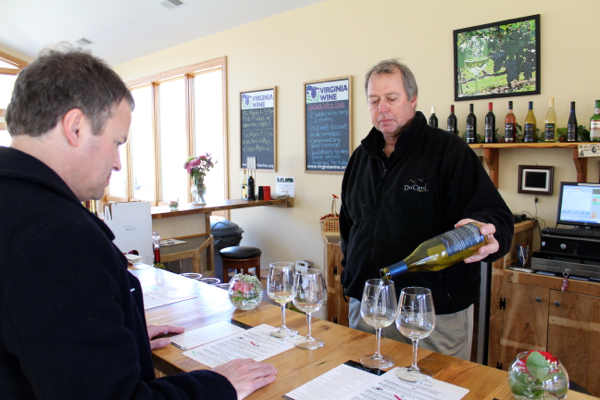
Speaking of a warm afternoon, the 2012 Rose should be a hit in the spring and summer. I like dry roses, and this one was can be considered off-dry with less than 1%residual sugar. This was produced from Cabernet Franc grapes with a splash of Cabernet Sauvignon. Its bright pink color and strawberry nose reminded me that warmer days, fragrant flowers, and lasting sunsets are just around the corner!
Scott Elliff was a very gracious host, and we learned that he remains dedicated to producing limited quantities of quality wine. To celebrate the success of the 2010 Signature Viognier, Elliff will include a copy of the wine-themed movie Bottle Shock with case orders of the 2011 Signature Viognier. Why Bottle Shock? This movie recalled the 1970s judging event that put California wines on the international wine map, and it was Steve Spurrier who hosted it. Spurrier likewise judge the so-called Judgment of Virginia in which Virginia Viognier went up against the best from France. It was the 2010 Signature Viognier from DuCard that showed most brightly!
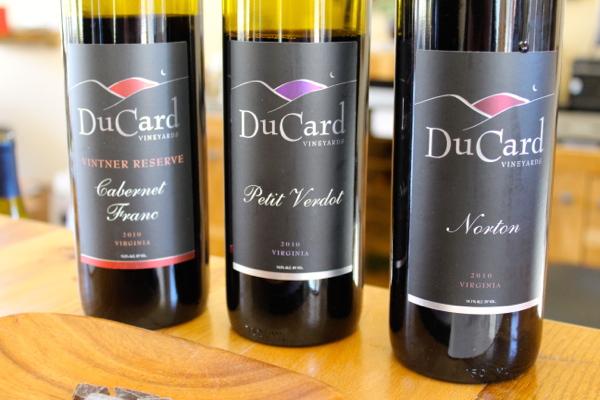
We made certain to purchase our DuCard favorites and promise to return soon; with spring weather just around the corner, plan a visit to DuCard Vineyards, but mention that Virginia Wine Time sent you.
Michael Shaps Works Wine
While the title is a twist on Shaps’ Wineworks , it is literally true. Michael Shaps produces wines for his own successful venture, Virginia Wineworks, but he also either makes wine or consults for a number of wineries in the state. This would include the winemaking at Pippin Hill Farm and Vineyards located nearby his Wineworks tasting room. During our recent visit to the Monticello area, we made an afternoon by visiting both wineries.
We always enjoy the no-nonsense tasting experience at Virginia Wineworks, and this time around we got to sample wines in boxed containers. Yes, wines in boxes. There is a trend underway to reconsider how traditionally disreputable methods of packaging wine (and that includes screw cap enclosures) are being viewed. However, we’ve had boxed wines from Bordeaux that were very good, and so we tasted the Wineworks boxed wines with open minds. We both concluded that they were very good, and for the amount of wine that they hold (four bottles) well worth the price. The Box Wineworks White Blend is a perfect aperitif; however, Paul favored the Box Wineworks Red, a blend of Merlot, Petit Verdot, Malbec and Tannat. This was a fruity, lighter-bodied wine that is perfect on its own or with simple meals such as meatloaf, grilled chicken, or pork chops.
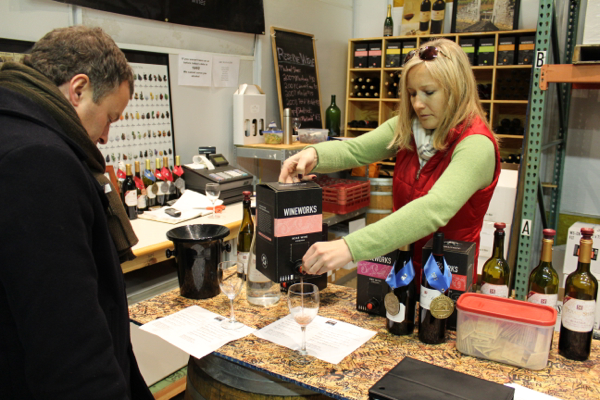
We also got to sample the Michael Shaps-labeled wines, and these are his premium wines. I remain a fan of his Viognier, and the 2009 vintage was my favorite of the white wines. Nice aromatics and a fuller mouth feel make for an elegant wine. However, I also enjoyed the Chardonnay 2008 with its pear notes and creamy finish. Of the red wines, my preference was for the Meritage 2008. Petit Verdot leads the blend at 44% and contributes to the earthy/spicy notes and dark fruit aromas. Merlot (33%) and Cabernet Franc (23%) add elements of cherry and raspberry. Paul favored the Petit Verdot 2009 and its characteristics of black currants, dark cherry, tobacco and pepper.
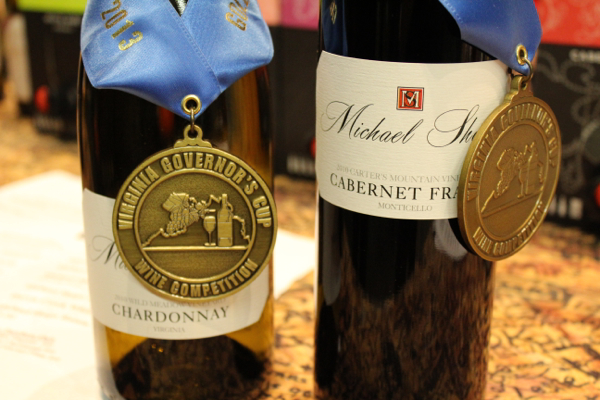
Vintner and wine educator Santa Rava conducted our tasting and expertly answered our questions (which can be numerous). Santa hails from the Sonoma area and is herself a winemaker. The quality of Michael Shaps’ wines and his reputation as a winemaker attracted her to the area in order to become part of the winemaking team at Wineworks. She also share with us that Michael is a full owner of a winery in Burgundy; in fact, Michael and his wife Christie also own and rent a 200-year old home in the winemaking village of Meursault, France. The home boasts two master bedrooms, a large kitchen with a private chef upon request, and heated towel racks. Perfect for a wine-tasting trip to Burgundy, a relaxing European getaway, or a honeymoon—or all of the above!
With our tasting completed, we were ready for lunch and decided to enjoy a bite at Pippin Hill Farm and Vineyards. The focus here is wine, too, and Michael Shaps is the winemaker. Before lunch, though, we had to select a wine to pair with lunch. This, of course, required a trip to the tasting bar. Our favorites? Of the white wines, the 2010 Chardonnay Reserve earned my top honors with its pineapple and pear notes and fuller mouth feel. Paul liked the 2011 Viognier and noted fruity aromas and peachy flavors. The red wines brought us to a joint conclusion—the 2009 Cabernet Sauvignon was our favorite. Smoky notes with cherry, blackberry, and earthy elements made for a more complex yet accessible wine. We opted to enjoy this one with lunch. So what was for lunch? For me, it was the steak frites with parmesan fries; for Paul, it was the homemade pizza. The foods are all the products of local farms, too! A bluegrass trio provided entertainment.
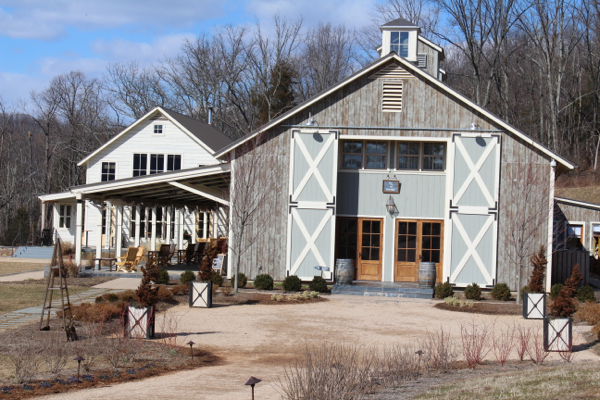
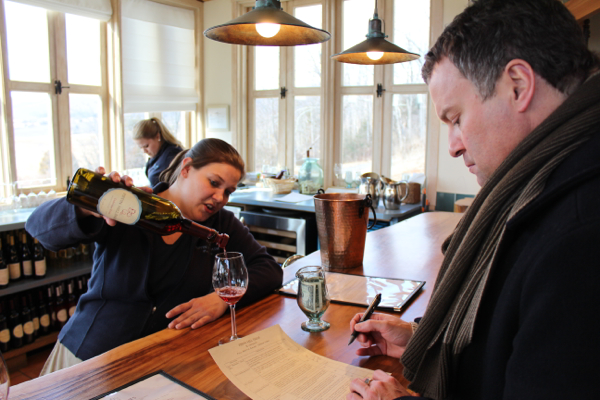
Plan a trip to the Monticello area to sample Michael Shaps’ wines, and then enjoy wine and lunch at Pippin Hill. Be sure to mention that Virginia Wine Time sent you.